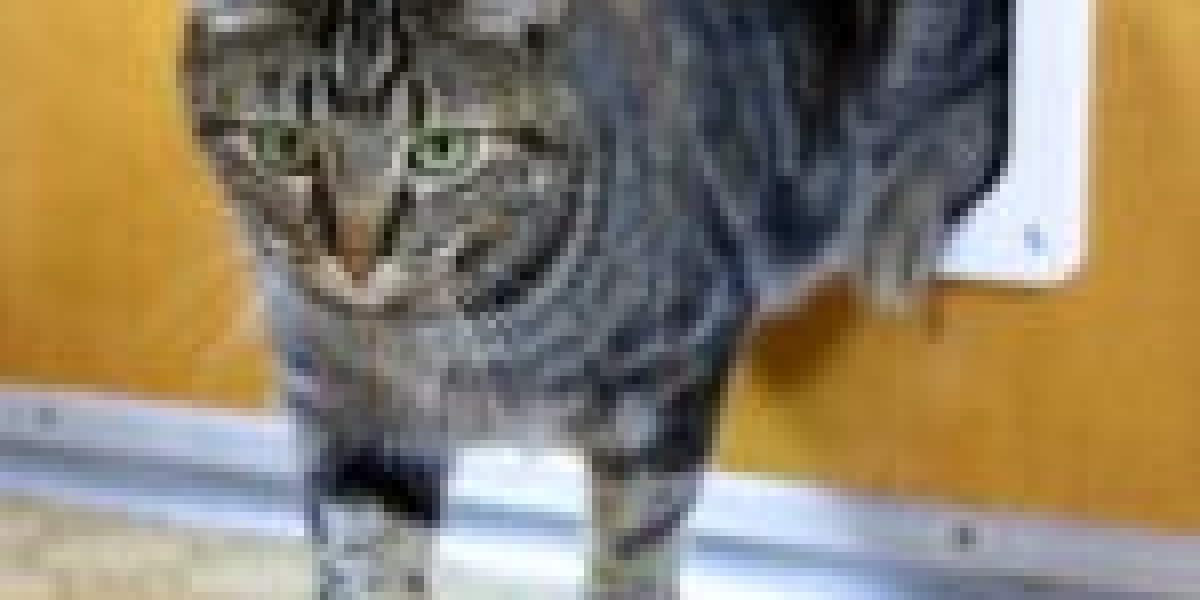The Purr-fect Solution: A Comprehensive Guide to Indoor Cat Door Installation

As any cat owner understands, providing a safe and practical method for felines to get in and leave your house can be a difficulty. Standard doors frequently position a problem, as they can be tough for cats to open and close, and may even posture a threat of unexpected escape or injury. This is where indoor cat doors come in-- a basic, yet effective option that allows your feline pal to come and go as they please, while preserving the convenience and security of your home.

In this short article, we will explore the world of indoor cat door installation, checking out the benefits, types, and installation processes included. Whether you're an experienced DIY enthusiast or a newbie homeowner, this thorough guide will provide you with all the details you need to create a purr-fectly functioning cat door for your feline buddy.
Advantages of Indoor Cat Doors
Before we dive into the installation process, let's take a look at the benefits of indoor cat doors:
• Convenience: Indoor cat doors allow your cat to come and go as they please, getting rid of the requirement for consistent door opening and closing.• Energy Efficiency: By decreasing the number of times you need to open and close traditional doors, indoor cat doors can help lessen heat loss and gain, making your home more energy-efficient.• Safety: Indoor cat doors reduce the threat of unexpected escape or injury, as your cat can securely get in and exit your home without the risk of being caught or hit by a closing door.• Reduced Stress: Indoor cat doors can help in reducing stress and anxiety in both cats and owners, as they remove the requirement for constant door tracking and produce a more serene living environment.
Types of Indoor Cat Doors
When it comes to indoor cat doors, there are a number of types to select from, each with its own special characteristics and advantages:
- Magnetic Cat Doors: These doors utilize a magnetic closure system to keep the door shut, and are perfect for smaller cats and kittycats.
- Spring-Loaded Cat Doors: These doors utilize a spring-loaded mechanism to keep the door shut, and appropriate for larger cats and multi-cat families.
- Electronic Cat Doors: These doors utilize sensing units and motors to manage access, and are ideal for tech-savvy owners who want a state-of-the-art option.
- Manual Cat Doors: These doors need manual opening and closing, and are ideal for owners who choose a more standard technique.
Installation Process
Setting up an indoor cat door is a relatively straightforward process that requires some fundamental DIY skills and tools. Here's a step-by-step guide to help you begin:
Tools Needed:
- Drill and bits
- Screwdriver and screws
- Measuring tape
- Level
- Pencil and marker
- Security glasses and a dust mask (optional)
Step 1: Choose the Perfect Location
When selecting the perfect location for your indoor bespoke cat flap installation door, think about the following factors:
- Traffic: Choose an area with very little foot traffic to avoid accidents and tension.
- Availability: Ensure the area is quickly accessible for your cat, and preferably near a food source or litter box.
- Environment: Avoid locations with extreme temperature levels, moisture, or drafts.
Step 2: Measure and Mark the Door
Step the width of your cat door and mark the center point on the wall or door frame. Utilize a level to guarantee the mark is straight, and a pencil to draw a line along the length of the door.
Action 3: Cut Out the Door
Use a drill and bits to cut out a hole for the cat door, following the producer's guidelines for size and shape.
Step 4: Install the Door Frame
Install the door frame, ensuring it is level and secure. Use screws to attach the frame to the wall or door frame.
Step 5: Add the Door Panel
Connect the door panel to the frame, following the maker's guidelines for assembly and installation.
Action 6: Test the Door
Check the door to guarantee it is working appropriately, and make any necessary changes to the alignment or tension.
Frequently Asked Questions (FAQs)
Q: How do I choose the best size affordable cat flap installation (Www.repairmywindowsanddoors.co.uk) door for my pet?
A: Measure your cat's width and height to figure out the perfect door size. Talk to the maker or a pet expert for guidance.
Q: How do I avoid drafts and wetness from going into through the cat door?
A: Install a weatherproof seal or limit to minimize drafts and moisture. Frequently clean and preserve the door to prevent damage.
Q: Can I set up an indoor cat door in a bearing wall?
A: It is suggested to avoid setting up automatic cat flap installation doors in bearing walls, as this can compromise the structural stability of your home. Speak with a professional pet door installer if you're not sure.
Q: How do I keep other animals or insects from entering through the cat door?
A: Install a safe and secure locking system or use a magnetic closure system to prevent undesirable entry. Think about adding a screen or mesh to keep pests and bugs out.
Tips and Tricks:
• Add a ramp or step: Create a comfortable and safe entry point for your cat by adding a ramp or action.• Use a soft-close mechanism: Reduce sound and stress by setting up a soft-close system that slows the door's closure.• Regularly tidy and preserve the door: Keep your cat door in top condition by regularly cleaning and maintaining the door and its elements.
In conclusion, installing an indoor cat door is a basic and efficient method to produce a comfortable and practical living environment for your feline friend. By following this detailed guide, you can produce a purr-fectly functioning cat door that meets your pet's requirements and improves your home's convenience and security.







